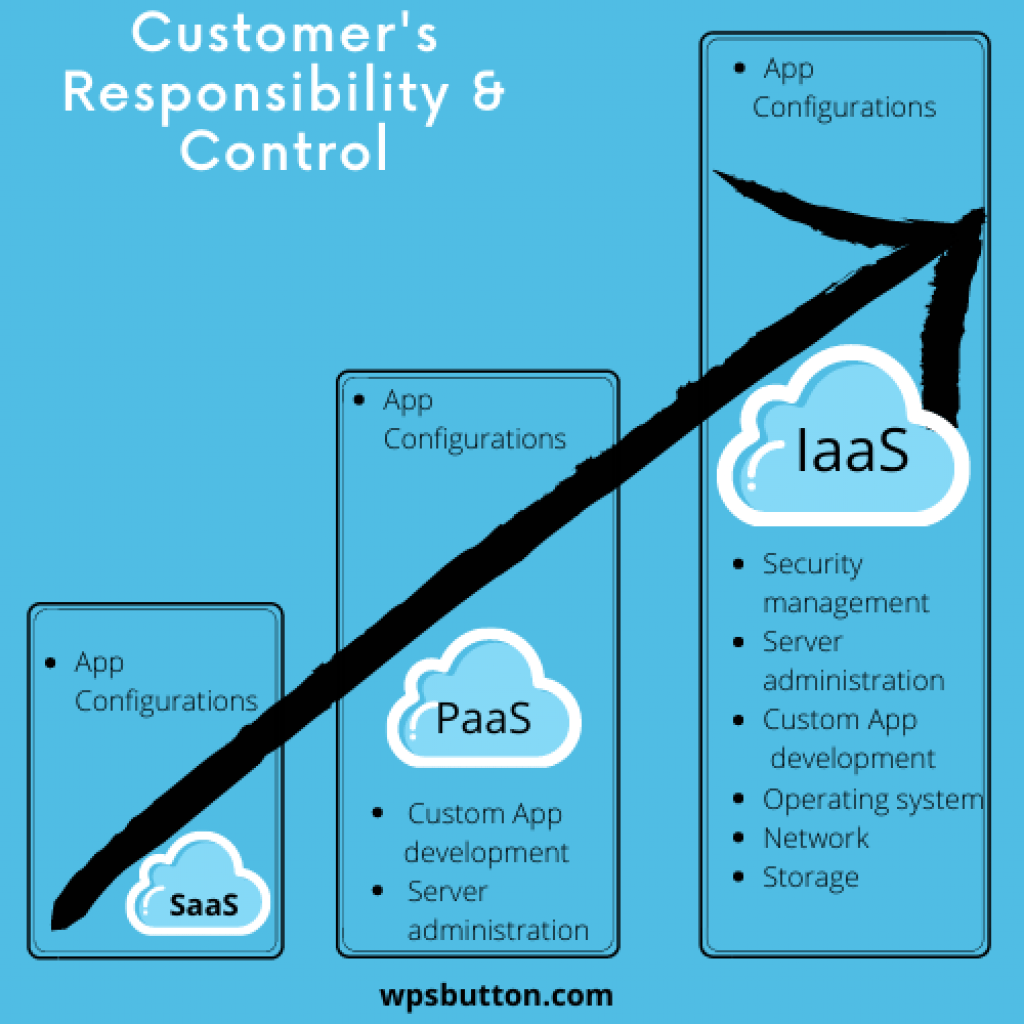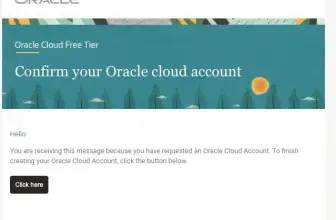
Cloud Service Models & IaaS Vs PaaS Vs SaaS: Let’s talk about these terms today.
For the last few years, cloud computing is the buzzword. Though cloud was there before as well the acceptance was not that great from businesses earlier.
During the last few years cloud computing has picked up and businesses have been transformed with acceptance by many big and small companies. And they are seeing great benefits in cost reduction and management and many other areas which will discuss in this article.
Table of Contents
IT Infrastructure Components
Lets start with few basics .. What is cloud and why do we need cloud?
Supposedly you have a business and you have the IT infrastructure to manage it , what all you would have ?
At a high level, you would have:
- Servers
- Network switches
- Cablings
- Server Space Racks
- Physical Space to station the servers
- Application Softwares to run the business processes
- Security Softwares for the security of server and networks
- Skilled manpower to manage servers and networks and application software
- Unskilled manpower to manage the physical spaces
- Uninterrupted Power Supply
- Heating, Ventilation, Air conditioning (HVAC) Control mechanisms
There may be few other overheads as well which depends on business to business.
There are overhead costs of owning and maintaining all the above components which are part of an IT infrastructure. Let’s call it IT infrastructure from now on in this article.
Suppose in place of owning and maintaining the IT infrastructure you are asked to pay small rent for usage of the same infrastructure and the IT infrastructure is owned and maintained by a third party company.
What do you get ?
You Get the same IT infrastructure services as a nominal rent and you can still utilize the services to run your business without any responsibility of maintaining the setup. Thus you save a lot on the Costs involved.
This is what Cloud computing is – You get your IT infrastructure on Rent, which you need to pay as you use!
The companies which provide these services ( IT infrastructure) are called Cloud services providers.
I know at this point you have several questions coming up in your mind like
- How do I customize the software?
- What if I want a certain configuration of a server.
- What if my data is huge and I need more storage.
- How do develop a custom application using a certain tool?
- And there can be many other similar questions..
So here comes the solutions ( IaaS , PaaS and SaaS)
What is IaaS , PaaS and SaaS (IaaS Vs PaaS Vs SaaS)
Cloud Providers provide these 3 varieties of cloud computing models
IaaS (Infrastructure as as Service)
These are only the bare computing machines on which customers can install softwares as per their needs. This will cover the need of storage , Network Bandwidth, CPU power.
PaaS (Platform as a Service)
PaaS is IaaS + some pre-loaded softwares ( as per customer needs) to be used to build custom applications. Of course, each component has its own prices.
Here IaaS services are not accessible and only PaaS services can be used, though the softwares are on the vendor’s infrastructure (IaaS)
SaaS (Software as a Service)
SaaS is a Full-fledged working application to address a business need. Technically SaaS is also software installed on IaaS but only SaaS services can be used.
There are variables of computing load , network bandwidth and storage with all the above services and it depends on customers transactions loads. All these are factors in deciding the subscription (rental) rates.
Some Popular IaaS, PaaS and SaaS Services
| Computing Model | Examples |
| IaaS | Oracle Cloud Infrastructure (OCI), Amazon Web Services (AWS), RackSpace, Microsoft Azure, Google Compute Engine (GCE) |
| PaaS | Oracle Integration Cloud, JCS, VB Studio, AWS Elastic Beanstalk, Force.com, Windows Azure, Google App Engine, Apache Stratos, OpenShift |
| SaaS | Oracle Cloud ERP, Oracle HCM Cloud, Salesforce, WorkDay, Google Workspace, Dropbox, Salesforce, Cisco WebEx, Gmail, Facebook |
So those where the very basics and now let’s dive a litttle deeper.
Could you guess what controls and responsibility you will have when you subscribe to these products. Responsibility and Controls will let you decide what exactly your cloud computing need is and what you would want in terms of services.

If you see the above infographics the customers responsibility and control of their computing are highest in IaaS services whereas when you use SaaS you have minimal control, basically you are just allowed to use the software.
SaaS Capabilities and Characteristics:
Since SaaS is a prebuilt software that is available to customers, it provides full usage capability but not from the administrative angle. The access to the software is via a certified internet browser and the delivery is over the public internet.
Advantages of using SaaS
There are many advantages of using SaaS as listed below
- Cheaper alternative than having the software on your premises
- You get updates regularly
- Performance and Uptime are guaranteed as per the Uptime Institute.
- You can ask your vendor to scale up and scale down the network, storage bandwidth as per your needs
- Subscription model so there is no commitment, you can switch vendors and to different SaaS services.
- Vendors keep adding the latest features to compete and you get to use high-end features (e.g. machine learning, AI capability ) without employing skilled IT Staff.
- SaaS does have Integration capabilities with other products.
Disadvantages of using SaaS
- You share your data with an external vendor. though there are standards for cloud data security with cloud vendors have to maintain but still, your data is with someone else. Some say it’s like a bank where your money is stored. Companies who cannot afford to share their data would not prefer SaaS.
- Switching vendors is possible but it may not be easy. you should ask the vendor what capabilities and support does it provide if you want to switch to another SaaS service. Some vendors provide a dump of all your data and it’s your responsibility to upload the same in another service.
- Data Security is in control of the vendor. Sensitive data like Personal information (PII) , Health, PCI ( Payment Cards) can be quite damaging if they are leaked.
- Data can be stored in OffSites for backup which is another risk factor to consider.
- Your Business continuity is in control of the vendor. Like, if the infrastructure (data center) has an outage your business will be impacted. Though there are standards that vendors have to maintain but the truth is even the best cloud providers have faced outages and downtimes.
The truth is even the best cloud providers have faced outages and downtimes.
PaaS Capabilities :
As we discussed PaaS is basically a development environment on the cloud, It has its own set of advantages and disadvantages similar to SaaS. The access to the PaaS environment is also via a Certified Internet browser and it’s delivered over a secure network.
Advantages of using PaaS
Similar to SaaS there are advantages of using PaaS as listed below
- Cheaper alternative than having to install and maintain the in-house development environment
- You can create custom applications as per your needs
- Rapidly develop applications with ready-to-use templates to quickly build business flows (time to market).
- Development time is reduced with sample recipes provide by paas vendors.
- You get updates regularly via patches on development tools installed.
- Reduce staff for Administration tasks as its managed by vendor.
- Your IT staff can focus on emerging technology skills.
- Your builds will be compatible with multiple platforms like mobile, tablet, desktop and OS as most PaaS providers proved platform independence out of box.
- Services can be accessed from any location.
- You can ask your vendor to scale up and scale down the network, storage bandwidth as per your needs
Disadvantages of using PaaS
With PaaS obviously there some disadvantages and challenges as well. So businesses to take care and analyze their requirement and see if a particular vendor fits their need. Some of them are:
- Your development data will be with the vendor.
- Switching PaaS vendors is not easy once you have a running application built on tools and environments provided by the PaaS provider. The code and libraries may not be supported by another vendor so it’s important to check what flexibility the new vendor provides.
- Data, network security will be handled by the vendor but for the custom application you built, you would be responsible for its security.
- Data can be stored in OffSites which is another risk factor.
Iaas Capabilities:
As we discussed IaaS is a platform where a bare computing machine(s) is provisioned and the customer can use to build you entire stack of application and you have full controls on network and storage.
The computing machines are virtualized means its not real and at the physical level there are high configuration servers which can be virtualized to provision multiple tenant offerings. Each tenant will have their own virtualized POD.
IaaS Advantages
With this model you have advantages like:
- You have more control of the server than PaaS
- Physical setup is not required and managed by vendor.
- Highly scalable and you can request for more resources as you need.
- Time to market is less.
- Subscription model so can switch when you want.
- Services can be accessed from any location.
- Performance and Uptime are guaranteed as per the Uptime Institute.
IaaS Disadvantages
- You have more responsibility to manage the infrastructure so this cost has to be borne by the customer.
- You Need specific IT Skilled Staff for that Cloud Vendor Infrastructure.
- You have to secure the hosted applications as the vendor will only secure the infrastructure.
- When using hybrid cloud or multi-clouds the integrations can become very complex and you may need skilled resources which increases the cost of maintaining the builds.
- Though you have more control than PaaS but still not comparable to owning the infrastructure in-house.
Summary
In Summary SaaS PaaS are different cloud computing models where businesses can take advantage and reduce cost and responsibility of managing an IT infrastructure, but there are obvious challenges as well.
Business should do a through analysis of the service providers they are signing for and understand there requirements technically before their migration to cloud journey.
A cloud architect has a big role to play in selecting the right cloud vendor and right service which can help organizations to reduce cost and complexity and make the move to cloud successful.
How are cloud resources charged?
It’s based on vendor pricing, generally some X amount for services per month.
Is Cloud secure?
Yes. Generally better than what a customer can secure.
Is Cloud Costly?
Depends.. For and workload which can be just done on a PC with excel as one-time investment, its better to stay on-premise.
Can we install anything on Cloud?
Yes, if the environment supports it.









